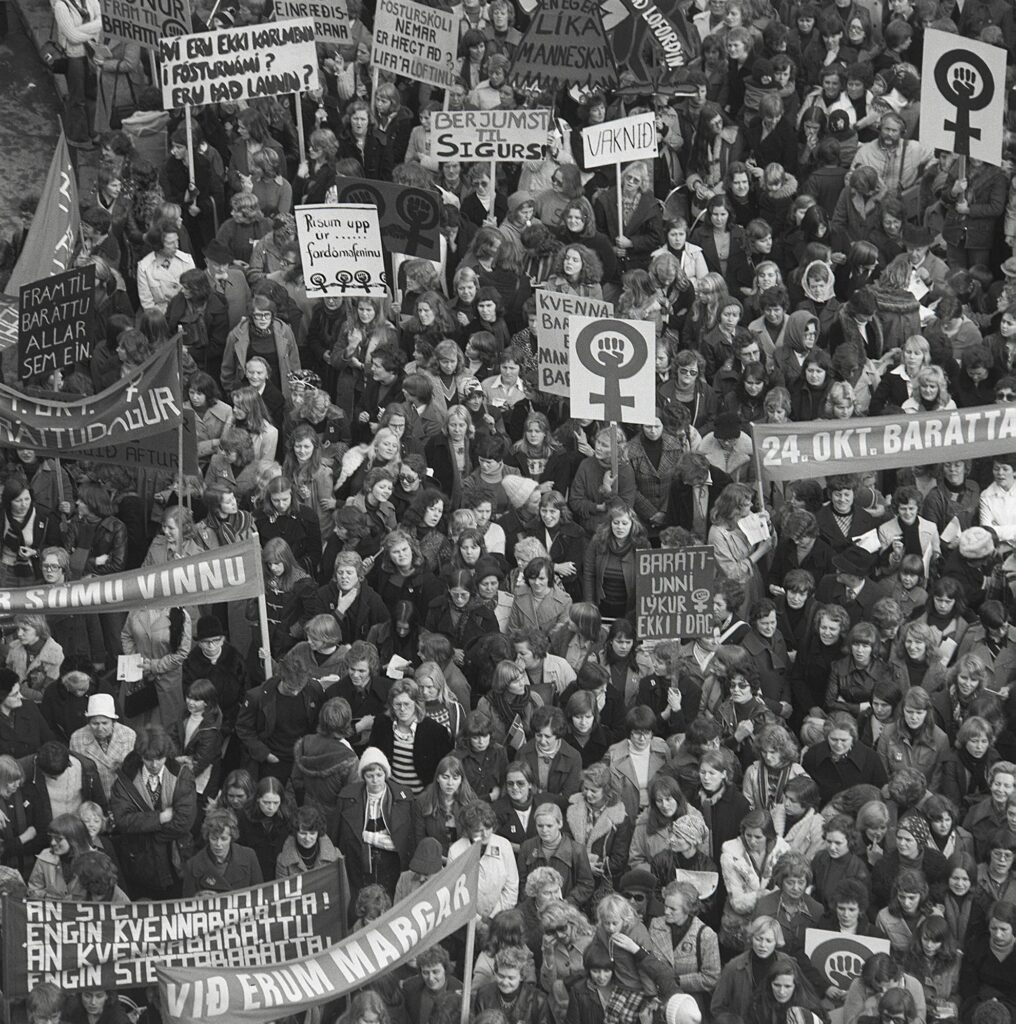
Today, October 24, 2024, 49 years have passed since the first Women’s Day Off was held in Iceland. On that day in 1975, thousands of Icelandic women left their jobs to protest various forms of discrimination against women in the labor market and draw attention to women’s contribution to Icelandic society. The Women’s Day Off has been repeated six times since then, most recently last year and then under the name Women’s Strike.
The United Nations General Assembly decided that 1975 would be dedicated to women’s issues. At the beginning of the year, Icelandic women’s organizations joined forces and planned actions throughout the year. The Red Socks movement’s proposal for women to leave work on United Nations Day, October 24, was accepted and implemented.
Women all over the country, and even on the seal, stopped working for the day. An outdoor meeting was held at Lækjartorg and it is estimated that around 25 thousand women gathered there, probably the largest outdoor meeting in Icelandic history till that day. The Women’s Day Off attracted considerable attention, including abroad.
The day was then repeated for the first time ten years later, in 1985, which was the final year of the United Nations Decade for Women. That year, around 18,000 women gathered at Lækjartorg to demand equal pay and gender equality.
“Women make noise”
Two decades passed until Women’s Day Off was held again, but on October 24, 2024, women stopped work at 2:08 p.m. Was it done because the women’s working day was over then as for their relative wages compared to men’s. Women marched from Skólavörðuholt under the slogan “Women make noise” and to Ingólfstorg, where an outdoor meeting was held. It is estimated that around 50,000 people were in the city center during the meeting, mostly women. At that time, it was about a third of all women in the country. Meetings were also held in other parts of the country.
Women also stopped working in 2010 and went to outdoor meetings in many parts of the country. In Reykjavík, the meeting was held at Arnarhóll, where about 50 thousand women gathered. That day, women stopped work at 2:25 p.m., showing just how slow progress had been in five years when it came to gender pay equality.
The next Women’s Day was held in 2016, but on October 24 that year, women stopped work at 2:38 p.m. Outdoor meetings were held in fifteen places all over the country demanding equal pay, the improvement of the status of women in all respects and the eradication of violence against women.
In 2018, Women’s Day Off was held under the name Women’s Strike. That day, women stopped work at 14:55 and walked out under the slogan “Let’s not change women, let’s change society!” As before, the demand for equal pay, but no less the demand for a stop to gender-based violence and harassment at workplaces, at home, and in public spaces, subsided. Among the speakers at the outdoor meeting in Arnarhóll, that day was Sólveig Anna Jónsdóttir, chairman of Efling.
The last women’s strike took place last year, 2023. On that day, women and non-binary people were encouraged to stop work for a whole day, as the fight for equal conditions, equality, fight against discrimination and violence was going too slowly. The strike took place in many parts of the country, but in the center of Reykjavík, the police estimated that up to 100,000 people, mostly women, had gathered.
Looking at the numbers, the unadjusted gender pay gap in 2022 was 8.6% in favor of men. Last year, however, it had risen to 9.3%.
There is still a long way to go, and most of the evidence points, unfortunately, to the fact that last year’s Women’s Strike was not the last that was necessary.
